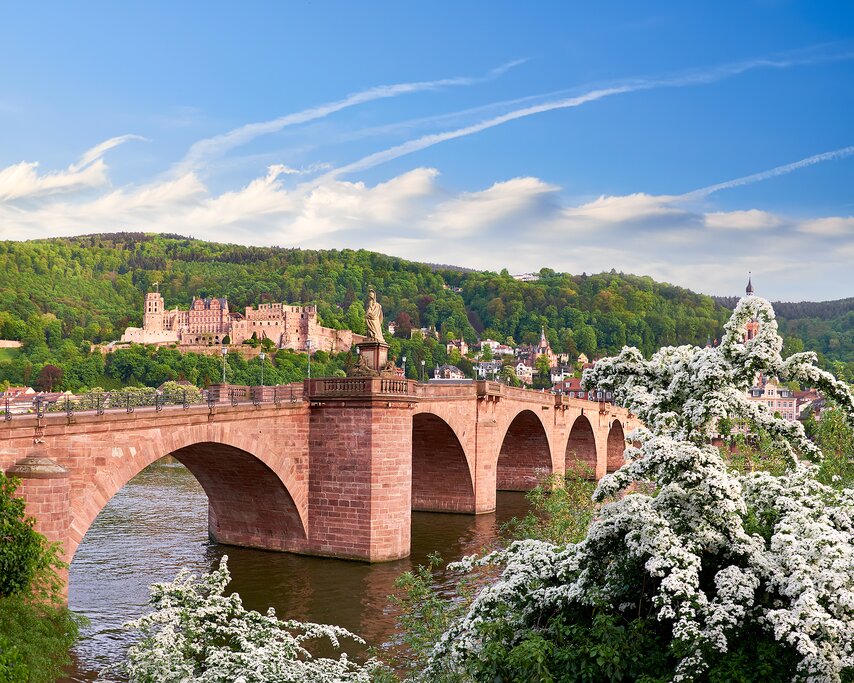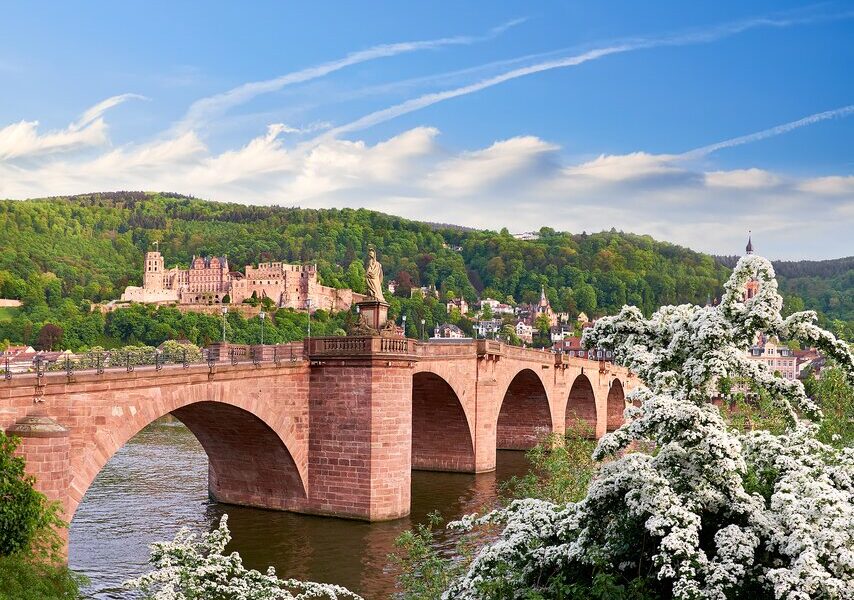
Welcome to “Frühling” (spring) in Germany, when colorful blooms take the place of dull winter landscapes. This is a great time to explore the country post-hibernation and hit April fairs and festivals in cities like Frankfurt, Munich, and Stuttgart. Prices will increase during the week of Easter, so it’s best to book early.
April in Germany marks a hopeful transition, as the country and its Northern European neighbors shake off the winter months and embrace the outdoors. There’s a palpable sense of excitement in the air as the weather warms, flowers begin to bloom, and trees sprout fresh buds. The days grow longer and brighter, providing more opportunities to enjoy the sunshine and blue skies that become increasingly common throughout the month.
The precise nature of the spring weather depends greatly on the specific location within Germany and the exact time within April that you are traveling. In Berlin, the nation’s vibrant capital city, temperatures show a marked improvement compared to the colder preceding months. Visitors can anticipate average daily high temperatures reaching around 57°F (14°C), while the average daily lows hover around 41°F (5°C). The northern coastal regions of Germany might experience slightly cooler and wetter conditions. In contrast, Frankfurt, situated in the southwestern part of the country, is often considered the warmest city in Germany. Here, you can expect average daily highs of approximately 61°F (16°C) and average lows of 43°F (6°C). While the higher altitudes of the alps may still retain some snow, it gradually melts away, revealing lush green pastures and inviting hiking trails that become more accessible as the month progresses.
When packing for a trip to Germany in April, it’s crucial to be prepared for variable weather conditions. A spring jacket or a light winter coat is an absolute necessity, especially during the earlier part of the month. Packing layers of clothing is also highly recommended, allowing you to adjust to the cooler temperatures experienced during mornings and evenings. Additionally, it’s prudent to bring a rain jacket and an umbrella, as spring showers and even thunderstorms are quite common occurrences during this time of year.
In terms of tourism, early spring is generally considered the off-season in Germany, resulting in fewer crowds at popular attractions. This also translates to potentially lower rates for flights, hotels, rental cars, and various activities. However, there’s one significant exception to keep in mind: if the Easter holiday falls within April rather than March. If Easter falls in April, the week leading up to it is a popular holiday travel period for both Germans and other Europeans traveling around the continent. If your travel dates coincide with this period, it’s highly advisable to book your accommodations and transportation well in advance to ensure availability and secure the most favorable rates. To avoid crowds, thrifty travelers may want to avoid the week leading up to Easter and the week after.
Germany boasts many appealing destinations to explore in April. A good starting point could be Berlin, a European capital with something for everyone. Arriving at the Berlin-Brandenburg Airport, you can spend several days exploring the city’s twelve boroughs. Mitte is centrally located with art collections and exhibitions, while Kreuzberg and Friedrichshain are known for cafes and nightlife. If you choose to stay in Berlin, you can take a day trip to Potsdam to see UNESCO-listed palaces and the turning-green parks.
Munich makes a great base for trips to the Bavarian Alps, and its Springfest rivals Oktoberfest. Another Springfest can be found in Stuttgart, considered the biggest in Europe. You can catch a train to Heidelberg to see the university town on the Neckar River, or keep going to Frankfurt and its youthful energy by the riverside.
Besides the usual spring blooms, you can also catch the Japanese cherry blossoms planted after reunification, usually blooming for three weeks in late April or May. In Bonn, the city of Beethoven on the Rhine River, you can find ‘Cherry Blossom Avenue’ in the Nordstadt neighborhood along with the Beethoven House.
Hiking trails have options all over the country, from the north coast to extensive routes in the Black Forest. Wine tours are also opening for the season in the regions of Moselle-Saar-Ruwer and Rheinhessen. Germany’s fairy-tale castles are great to visit this time of year before the summer crowds, like Neuschwanstein Castle in the Bavarian Alps, Schwerin Castle near Hamburg, or Burg Eltz near Frankfurt.
April also sees Spring Fairs nationwide with celebrations and festivities. You can find them in Munich, Frankfurt (Spring Dippemess), and Stuttgart.
Easter and Holy Week are very popular in Germany. They might fall in late March or April, but Good Friday and Easter Monday are public holidays.
Finally, Walpurgisnacht is celebrated on the last day of April in the Harz Mountains with costumes, bonfires, and dancing in and around Thale.
B-914

